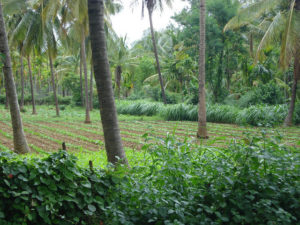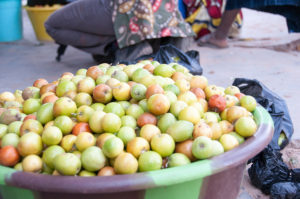
Following the revision and resubmission of Flagship 2 on livelihood systems in the CGIAR Research Program on Forests, Trees and Agroforestry’s (FTA) Phase 2 Proposal (2017-2022), the flagship has received a positive evaluation and the highest possible rating of “strong” from the CGIAR Independent Science and Partnership Council (ISPC).
The improved rating for this key component of FTA was an important outcome for the collective work of all the FTA scientists involved in reformulating the proposal.
The ISPC’s ex-ante assessment of the flagship underscored that the proposed research was of very high quality, with a “robust” theory of change and “a clear strategy for impact”, and praised the “research-in-development” approach to generate international public goods, which “is coherent and, if implemented well, can set an example for other [CGIAR Research Programs]”.
Read more: Proposal Phase II — Forests, Trees and Agroforestry: Landscapes, Livelihoods and Governance
The livelihood systems flagship harnesses the transformative power of trees, through developing and promoting innovations in management, markets and policies to reduce poverty, and increase the food and nutrition security of smallholders. Better tree management contributes to these livelihood goals while protecting the environment, enhancing natural capital and strengthening people’s capacity to adapt to climate change.
The research focuses on how to:
- Manage trees in fields, farms and agricultural landscapes to meet livelihood needs, including deploying appropriate tree germplasm and managing it to deliver desirable outcomes, which includes developing options that use trees to improve and sustain soil health, restore land and avoid further degradation.
- Develop markets for agroforestry products so that smallholders capture more value from what they produce.
- Formulate policies that enable people to benefit from managing tree cover on their farms and collectively in forests, and bridge the time between investment in trees, and returns from them, using novel public and private financing options.
Read more: Flagship 2: Enhancing how trees and forests contribute to smallholder livelihoods

In the revised proposal, FTA clarified the reasoning and provided evidence of the ways in which trees and forests can benefit smallholders’ livelihoods in a diversity of contexts. The scientific and strategic rationale for the focus and approach of the flagship was also strengthened. The theory of change was revisited in order to better explain the claims made and the circumstances under which they hold.
In particular, the revision emphasized how the flagship would work out its research and development partnerships with development actors, thus addressing the main recommendation of the very positive 2016 donors’ review of the flagship.
In addition, the resubmission clearly explains how particular resources are key to driving the research portfolio and for the flagship to generate international public goods (IPGs). This includes showing how the flagship will lead to a better understanding of how contextual factors affect the performance of solutions.
Finally, the livelihood systems flagship operates with a transdisciplinary focus involving scientists with different expertise and skill sets, comprising roughly one-third social scientists, one-third interdisciplinary system or agroforestry scientists, and one-third biophysical, agronomic or ecological scientists.
In formulating its rating of Flagship 2, the ISPC:
- Recognized the “options by context” framework as not only a “clear strategy for impact” but also an “explicit way to tackle high contextual heterogeneity”
- Mentioned that the strategy to generate IPGs through research in development is “coherent and, if implemented well, can set an example for other [CGIAR Research Programs]”
- Considered that the flagship had a robust theory of change that “carefully considers the spheres of control, interest and influence” and articulates why and how it will succeed
- Concluded that by “making livelihoods the focal point of the flagship, the proponents have provided a compelling narrative, aided by graphics”, which “demonstrates how trees and plantations can add value and make a major, additional contribution on a path to agricultural intensification”.
Read more: ISPC Assessment of Flagship 2: Trees for Smallholder Livelihoods
The revised proposal explains how resources are critical for achieving the flagship’s theory of change, to drive the overall research portfolio, as well as to enable the generation of IPGs, enabling an understanding of how contextual factors affect the performance of options.
FTA’s livelihood systems flagship is now open for funding in 2018 and, as per the FTA prioritization process, will deploy its efforts in 2018 on a specific set of operational priorities, including focusing on market-based agroforestry, the farm-forest policy interface, diversification of tree-crop commodity production systems (coffee, cocoa, oil palm, rubber and tea), silvopastoral systems, understanding smallholder livelihood trajectories, and agroecology for food security and nutrition.
The flagship is led by the World Agroforestry Centre’s (ICRAF) systems science leader Fergus Sinclair, involving all FTA core partners and working with a wide range of stakeholders, including major international development organizations such as the International Fund for Agricultural Development (IFAD) and the Australian Centre for International Agricultural Research (ACIAR), as well as national agricultural development institutions, universities in the North and in the South, and foresters’ and farmers’ associations.
This research forms part of the CGIAR Research Program on Forests, Trees and Agroforestry, which is supported by CGIAR Fund Donors.











